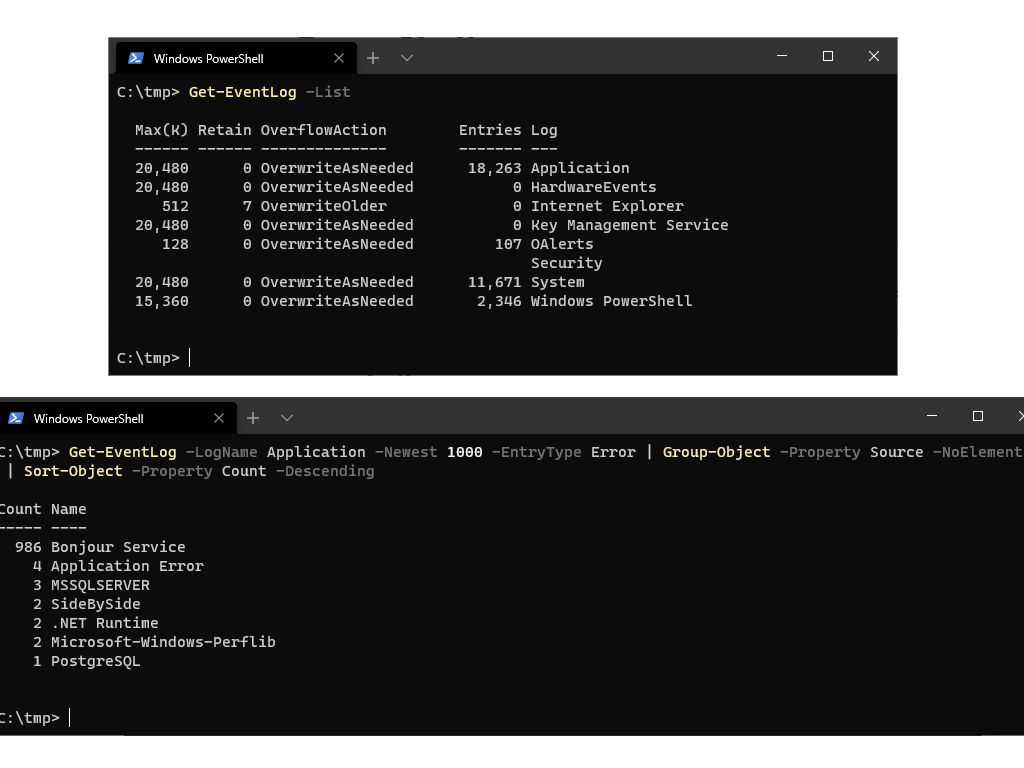

- POWERSHELL DISPLAY MENU TO USER WINDOWS 10
- POWERSHELL DISPLAY MENU TO USER CODE
- POWERSHELL DISPLAY MENU TO USER DOWNLOAD
- POWERSHELL DISPLAY MENU TO USER WINDOWS
It can also be used to set the values to Disabled and Not configured. It can also be downloaded from GitHub: MEMCM-OSD-Scripts/Windows11 at master The script is written by my great co-worker Sassan Fanai! Here is sample screenshot of the step I use in my Task Sequence:
POWERSHELL DISPLAY MENU TO USER WINDOWS
I run the script during OSD in my Windows 11 branding group as shown below the script accepts variables for each setting that should be enabled. If the end-user tries to change the values they are greyed out as shown below. However it does not take up any estate that can be used for anything else so I think it is fine. They are turned on by the script but the end-user can not turn it off it the like that is the downside. I use the script during OSD to enable the Start Menu folders.
POWERSHELL DISPLAY MENU TO USER WINDOWS 10
Windows 10 MDM Bridge WMI Provider: Settings template – All about Microsoft Endpoint Manager () Great work and a real timesaver. MVP Peter van der Woude has created a great PowerShell script template which can be found here: If you want to test it out use PSEXEC for example. Note: as the MDM WMI Bridge is used the script must be run in System Context. What we can do is use the MDM WMI Bridge provider to set these settings using PowerShell. More information on the CSP can be found here: Policy CSP – Start – Windows Client Management | Microsoft Docs We can however enable them using CSP in Windows 11 but there is no way of doing it using Group Policy or registry settings. They can manually be turned on in Settings > Personalization > Start > Folders as shown below. Unfortunately, the Start Menu folders are not enabled by default which I would very much approve if they were! These are the folders we are talking about.
POWERSHELL DISPLAY MENU TO USER CODE
Here we also discuss the definition and syntax of PowerShell User List along with different examples and its code implementation.One of my favorite features in Windows 11 is the folders we can enable on the Start Menu. You can use the task scheduler to send emails to Administrators for the list of created, expired, about to expire accounts monthly. Invoke-Command -ComputerName LabMachine2k16 -ScriptBlock | Select Name, SAMAccountName, PasswordNeverExpires ConclusionĪs explained in this article, PowerShell uses the various commands to retrieve the list of the Users from the windows computer or from the active directory domain and that is helpful for administrators for their audit and clean-up tasks.

We can use the “ Net User” cmd command to retrieve the user list from the cmd or the PowerShell. Examples of PowerShell User Listįollowing are the examples are given below: Example #1: Getting Local User Accounts List Using Cmd

When you run the local user commands on the domain controller, it will provide you the active directory users because DC doesn’t have the local users. If you are remoting to the older PowerShell version machines then the Get-LocalUser command won’t work there.
POWERSHELL DISPLAY MENU TO USER DOWNLOAD
In the earlier PowerShell version, to retrieve the list of users you either need to download the local accounts module or you need to use the cmd command like Net User (which still works) or the WMI method class Win32_UserAccount. Get-LocalUser command was introduced in PowerShell 5.1 and it is part of module. There are various methods to list the users in the PowerShell by using the Native commands like Get-LocalUser which retrieves the local user account details from the local computer or the remote computers or the Get-ADUser which retrieves the users from the Active Directory domain. In addition “Net User” command in cmd is also helpful to retrieve the local user list. We can also use the WMI or CIMInstance class Win32_UserAccount to retrieve the local user details from the local or the remote computers.


 0 kommentar(er)
0 kommentar(er)
